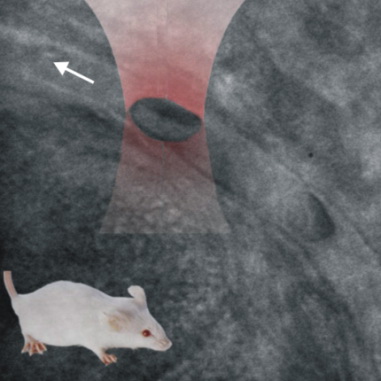
- 【CGTN】Antiferromagnetic phase transition observed in fermi...
- Chinese Scientists Create Multi-node Entanglement in Metropo...
- Two Breakthroughs from USTC Selected China’s Top 10 Scienti...
- Great Minds in Quantum Technology Sparkled in Hefei: 2023 In...
- [Xinhua News]China's Computational Power Gains New Strength ...
Optical trapping of cells in living mice
-
 [2013-04-24]
[2013-04-24] -
Prof. Li Yinmei's group from University of Science and Technology of China(USTC), together with her colleagues and collaborators, has realized optical trapping and manipulation of cells in living mice for the first time. Such a novel method has been presented in the scientific journal Nature Communications on April 23th, 2013 (DOI: 10.1038/ncomms2786). The paper is featured in the week's press release for Nature Communications.
It is important to study the life science in living animal, including processes such as cell migration, cell sorting and targeted drug delivery, so in vivo technology has been one of the research focus on the studies in vivo. The studies of in vivo biological activities will be greatly accelerated by a tool that allows manipulation of cells in living animals. Although some manipulation techniques for cells in vitro exist, there are not methods to manipulate the cells individually in living animals before. Prof. Li Yinmei's group have proposed and experimentally demonstrated an optical tweezers method to trap and manipulate the cells in living animals non-invasively.

Optical trapping of the red blood cell in living mice. /Image by LI YinMei
In the experiment, they have achieved optical trapping and manipulation of flowing red bllod cells in blood capillaries of living mice. The red blood cells are trapped in individual blood capillaries. In addition, the capillaries are blocked with red blood cells trapped by optical tweezers. Furthermore, they have managed to clear the blockage of capillary and recover the blood flow with optical tweezers.
Optical tweezers have been widely used for scientific research in vitro due to the advantages of non-contact force. The method in the paper can penetrate through biological tissues and manipulate the cells in living mice. The results show that the technique has great potential in studying life science in vivo. Also, it will broaden the application and usefulness of optical tweezers in biomedical research.
Links:
http://www.nature.com/ncomms/journal/v4/n4/full/ncomms2786.html
http://www.nature.com/ncomms/press_releases/ncomms0413.html
(LI Yinmei,School of Physical Sciences)
图片1.jpg
